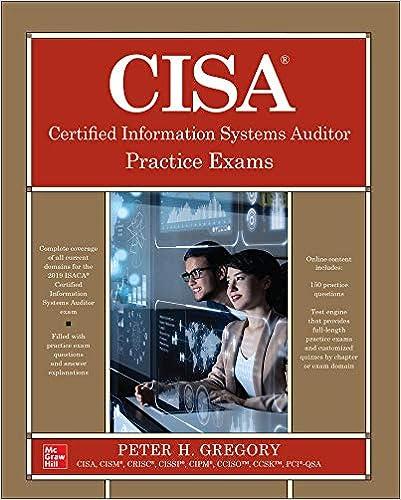Question
Part A MK Enterprises, Inc. started business on January, 1, Year 1 and keeps its books on the cash basis of accounting. The trial balance
Part A MK Enterprises, Inc. started business on January, 1, Year 1 and keeps its books on the cash basis of accounting. The trial balance of the company at December 31, Year 1 is as follows: Selling expenses DEBIT CREDIT Cash $5,000 Common stock $10,000 Sales 40,000 Cost of sales 20,000 Payroll expense 8,000 Selling expenses 3,000 Administrative expenses 5,000 Small tools expense 5,000 Income tax expense (estimated tax payments) 4,000 Other information about MKs operations: 1. Customers owe the company $20,000 on unpaid invoices at the end of the year. 2. The company has goods with a cost of $12,000 in its warehouse at year end. The company owes its supplier for all of these goods, plus they owe another $2,000 on a prior shipment that was sold during the year. 3. The amount the company shows as small tools is for the principal manufacturing asset of the company. The company depreciates its fixed assets on a straight line basis with a five year asset life. Fixed assets are assumed to be purchased at the beginning of the year. 4. Included in administrative expenses is a payment on the companys one year general liability insurance policy for $2,400. The policy was purchased and effective on July 1, Year 1. 5. When reconciling the bank accounts for the year, the company discovered that it had received a $500 bad check from a customer. The check was re-deposited and paid in January of Year 2. 6. The company estimates that 1.5% of its sales will eventually be uncollectible. 7. The company pays its employees on a weekly basis 7 days after the end of the pay period. The last paycheck date for the year was on December 31st. The weekly payroll of the company is $1,300. 8. The companys tax rate is 25%. There were no non-taxable transactions made by the company.
Part B On July 1, Year 1, the board of directors of All Seasons Sports, Inc. voted to dispose of the Ski & Snowboard operating segment of the company. On that date, the carrying value of the segment was $3,000,000, but the Board believed that it could sell the segment for no more than $2,500,000. The company was committed to its plan to sell the segment and was actively looking for a buyer until April 1, Year 2, when the division was sold to We Love Winter, Inc. for a sales price of $3,200,000. All Seasons Sports paid a brokers fee of 10% of the sales price when the transaction was closed. Ski & Snowboard's operating results were as follows: 1/1/Year 1 6/30/Year 1 ($300,000) 7/1/Year 1 12/31/Year 1 ($400,000) 1/1/Year 2 3/31/Year 2 ($200,000) All Seasons Sports has a tax rate of 30%. Calculate the Gain/(Loss) from Discontinued Operations for Year 1 and Year 2: Year 1 Year 2 Impairment Gain/(Loss) Operating Gain/(Loss) Gain/(Loss) on Disposal Income Tax Benefit/(Expense) Total Gain/(Loss) from Discontinued Operations
Step by Step Solution
There are 3 Steps involved in it
Step: 1

Get Instant Access to Expert-Tailored Solutions
See step-by-step solutions with expert insights and AI powered tools for academic success
Step: 2

Step: 3

Ace Your Homework with AI
Get the answers you need in no time with our AI-driven, step-by-step assistance
Get Started


